On This Page
The Best Summer Blankets of 2025
Our Top Picks
-
Best Overall
Boll & Branch Dream Bed Blanket -
Best Value
Brooklinen Lightweight Grid Cotton Blanket -
Most Comfortable
Luxome Lightweight Blanket -
Best Cooling
Sleep Number True Temp Blanket -
Best Luxury
Cozy Earth Bamboo Blanket -
Best for Outdoor Use
Buffy Puffer Blanket -
Best Weighted Blanket
Bearaby Cotton Napper
Best Overall
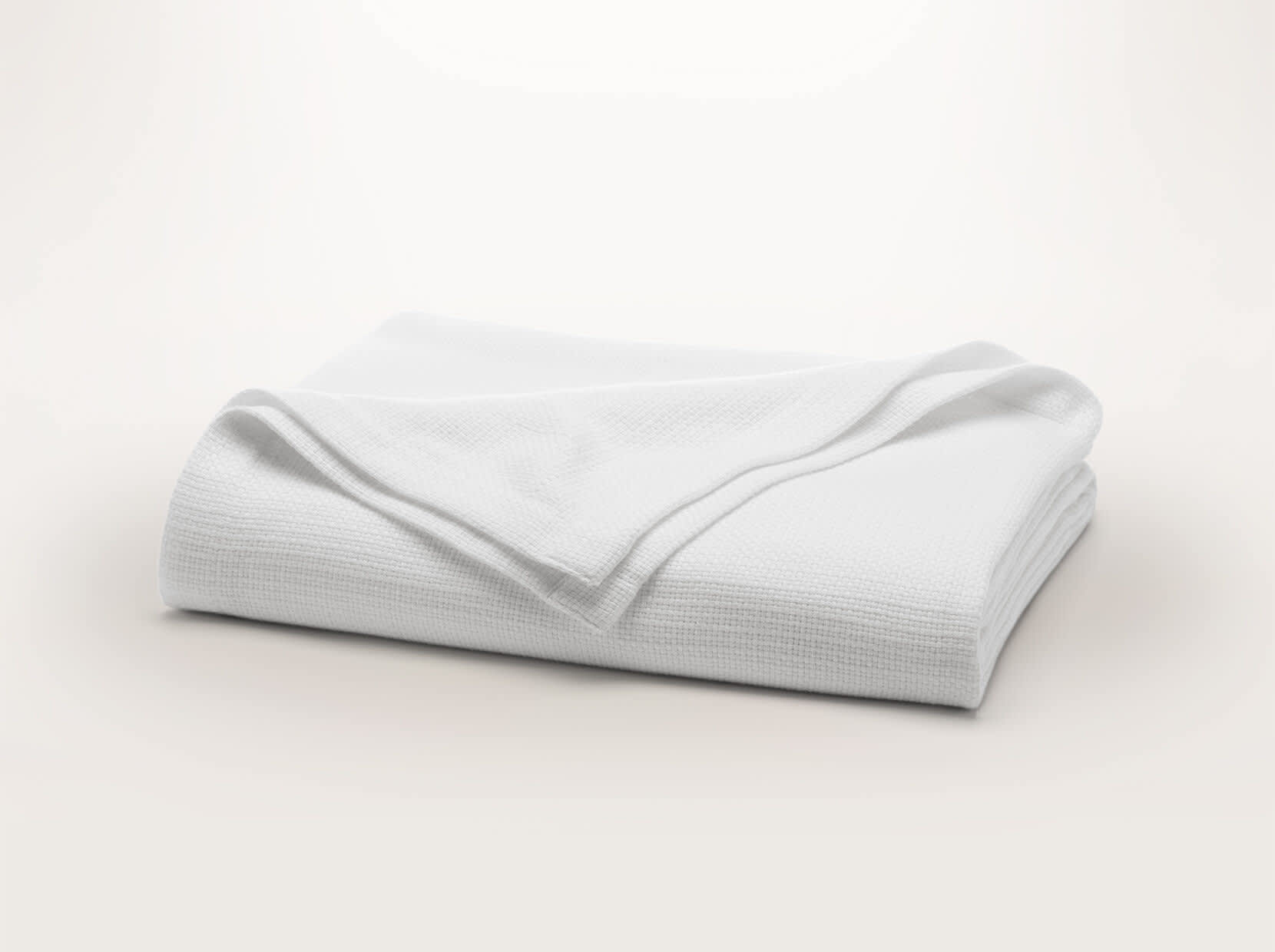
The Boll & Branch Dream Bed Blanket checks all the boxes for many sleepers seeking breathable summer bedding. Made of organic long-staple cotton in a basket weave, this blanket allows for ample airflow to keep sleepers cool in hot weather.
Pros & Cons
Pros
- Made with breathable, GOTS-certified organic cotton
- 30-day trial with free returns
- Layerable for winter
Cons
- Intricate stitching could snag on buttons and zippers in the wash
- Limited solid color choices
Why We Like It
Best Value

The Brooklinen Lightweight Grid Cotton Blanket provides just enough coverage to keep you cozy during the summer months without absorbing or trapping heat. You can choose from a handful of colors, including neutrals and earth tones.
Pros & Cons
Pros
- Pure cotton is light, breathable, and luxuriously soft
- Extensive color selection
- All orders include a 365-night trial period
Cons
- May be too lightweight for year-round use
- Pilling can occur over time
Why We Like It
Most Comfortable
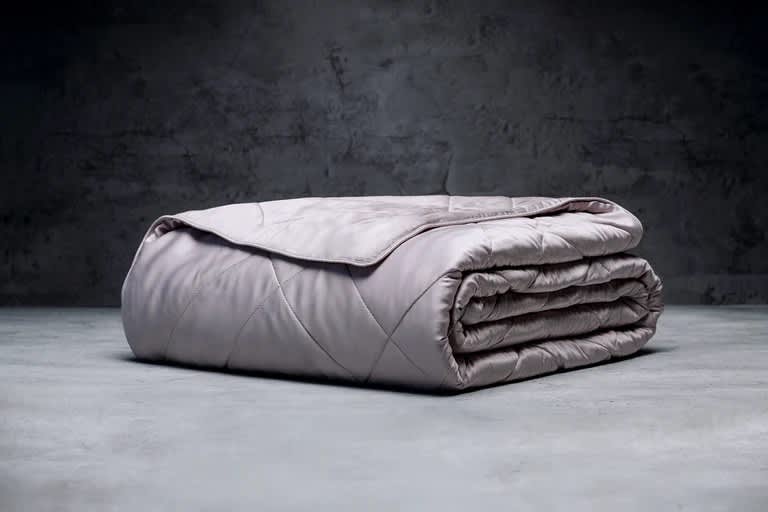
The Luxome Lightweight Blanket is designed for all-season comfort. While quilting adds a traditional look, the thin profile and breathable, moisture-wicking viscose also make it a good option for summer.
Pros & Cons
Pros
- Made from lightweight viscose derived from bamboo
- Traditional look despite breathable design
- Machine-washable
Cons
- Returns incur shipping charges
- The sateen weave is slightly less breathable than some alternatives
- May wrinkly easily
Why We Like It
Best Cooling
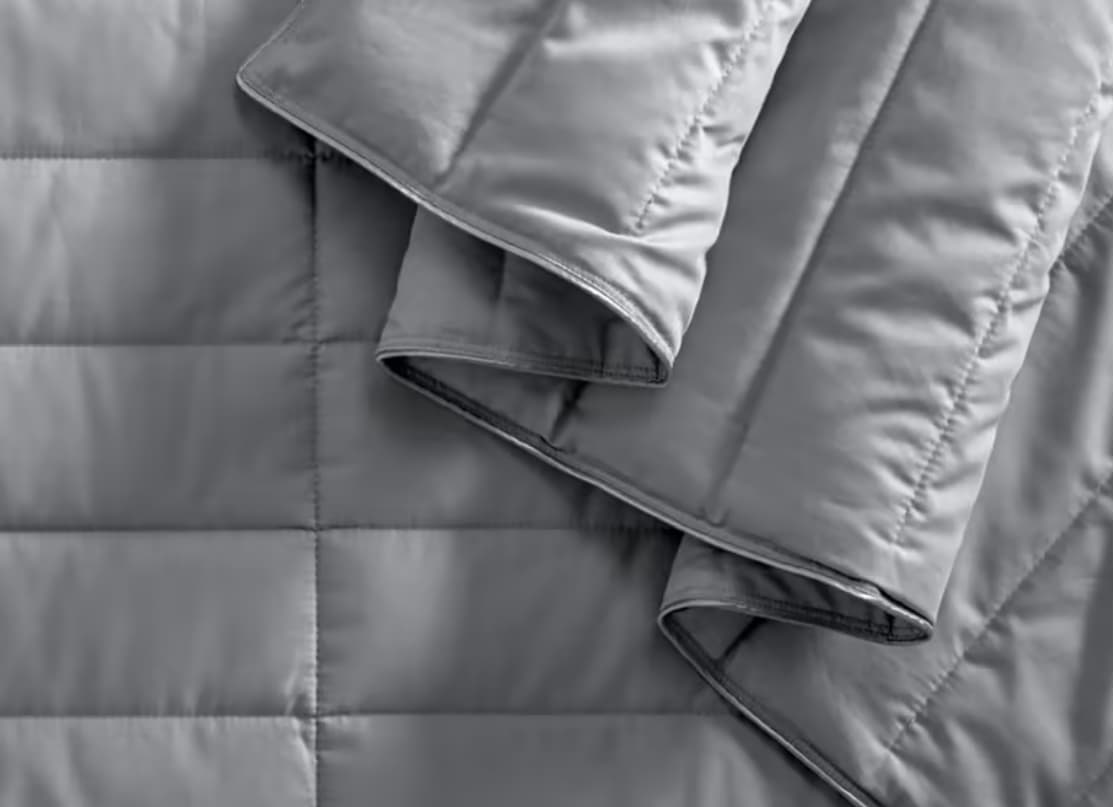
The Sleep Number True Temp Blanket stands out for its temperature-regulating technology. This blanket’s shell and fill incorporate 37.5 Technology, which uses volcanic minerals embedded in the fabric. The particles are intended to dissipate both heat and moisture, making this blanket a good choice for hot sleepers.
Pros & Cons
Pros
- Incorporates cooling technology designed to regulate temperature and moisture
- 100-night return policy gives you more time to decide if the blanket is right for you
- Plush yet cool
Cons
- May require fluffing
- Use of synthetic components may not appeal to eco-conscious shoppers
- A bit smaller than many other bed coverings, reducing how far it drapes
Why We Like It
Best Luxury
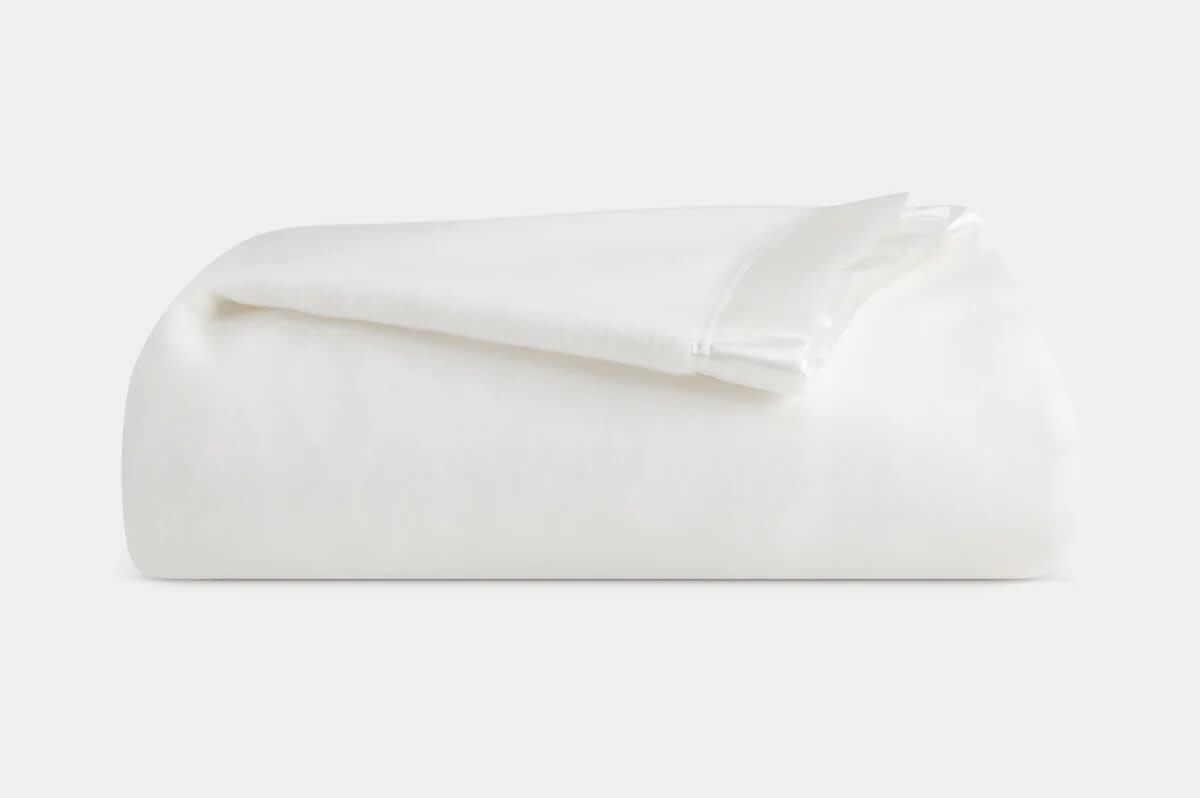
The Cozy Earth Bamboo Blanket’s classic white color and satin border are designed to mimic the look of a high-end hotel bed. It features soft, lightweight bamboo-derived viscose that is both breathable and moisture-wicking.
Pros & Cons
Pros
- Made from breathable and moisture-wicking viscose derived from bamboo
- Comes in a reusable tote bag
- Available in twin, full/queen, king, and baby blanket sizes
Cons
- Only available in white
- Price-point may be too high for some budgets
Why We Like It
Best for Outdoor Use
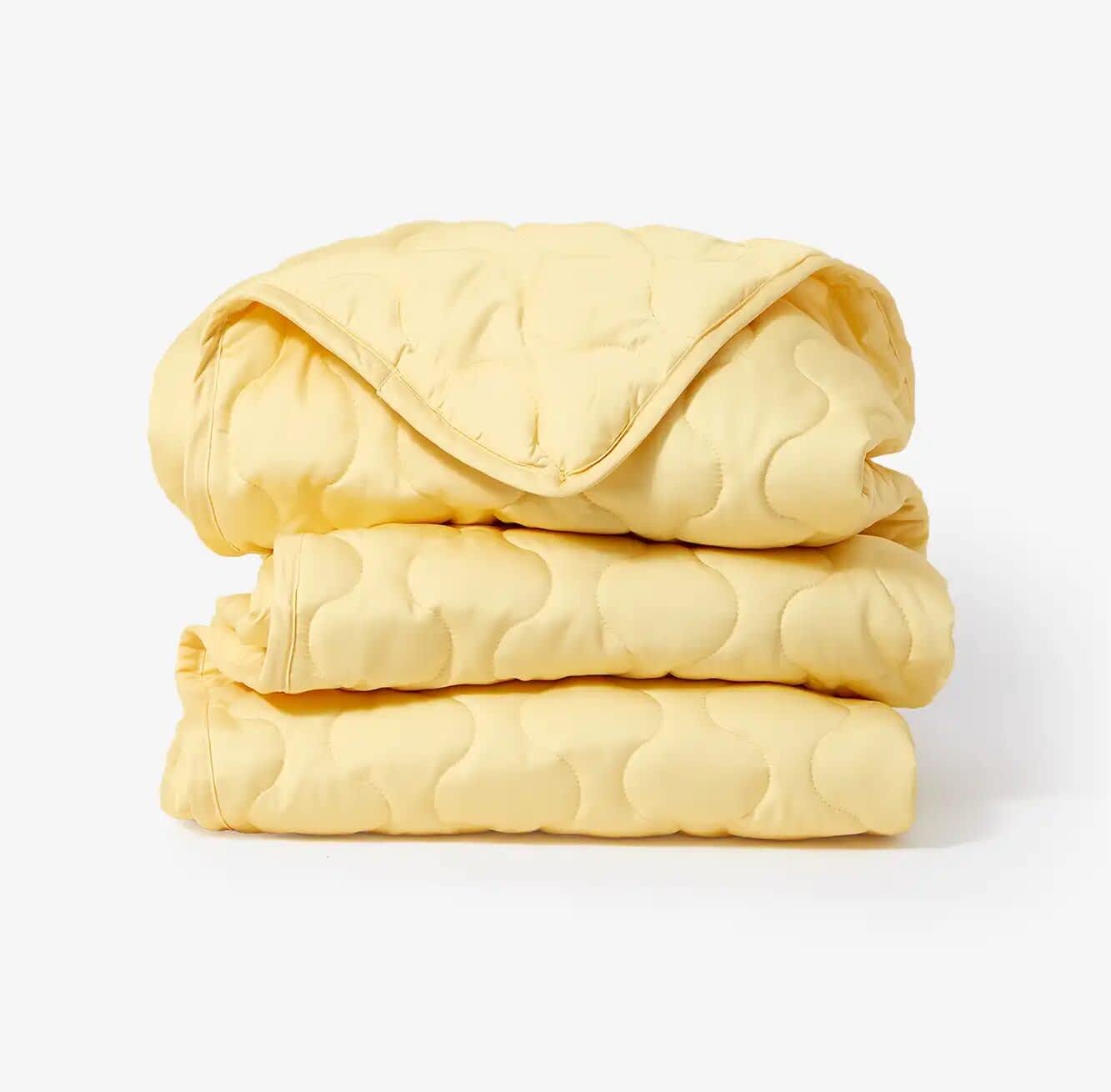
The Buffy Puffer Blanket is a versatile throw made for indoor and outdoor use. With an appearance and feel reminiscent of a puffer jacket, the blanket is plush without retaining a lot of heat. It also comes at a lower price-point than many options, making it a great choice for value-conscious consumers seeking a versatile summer blanket.
Pros & Cons
Pros
- Stain-resistant for convenient use in any setting
- Shell includes a blend of Tencel and recycled polyester for smoothness and breathability
- Comes in four colors
Cons
- Only available in throw size
- Some may feel that the puffer-jacket-like texture is too outdoorsy for regular indoor use
Why We Like It
Best Weighted Blanket

Thanks to an open-knit design, the Bearaby Cotton Napper is one of the most breathable weighted blankets we've tested. This allows you to enjoy gentle, soothing compression without overheating during hot or humid times of the year.
Pros & Cons
Pros
- Available in four weights ranging from 10 to 25 pounds
- Open-knit construction promotes airflow
- Wide color selection
Cons
- Some owners say the edges fold in over time
- Not compatible with certain washing machines
Why We Like It
How We Test
Our team chooses the best summer blankets by exhaustively testing every model we can get our hands on. In our Seattle-based sleep lab, we examine how breathable summer blankets feel by trying them out ourselves. We lie under each one to see whether they regulate temperature during use, and then we examine their materials.
Summer blankets come in a range of materials, weaves, and knits — so we look carefully at every model to see what its fabric characteristics can tell us about quality and durability. We also read verified customer reviews before making our final recommendations to find out how a particular blanket holds up and performs with extended use.
What Is a Summer Blanket?
A summer blanket is a breathable top layer that covers the bed without trapping a lot of heat. Intended for warm-weather use, summer blankets allow airflow so that body warmth can dissipate. They also frequently wick moisture to transfer any sweat away from the sleeper. Many summer blankets are lightweight, but weighted options are also available.
Why Should You Use a Summer Blanket?
Many sleepers appreciate the comfort of a blanket even during times of the year when they don’t need extra warmth. A summer blanket can provide a similar sensation without significantly contributing to heat buildup or stuffiness. A blanket designed for summer comes with a variety of benefits.
- Stay cooler in warmer weather: A lightweight summer blanket can help you maintain a more neutral temperature during the night.
-
Increase airflow and reduce heat: Summer blankets use breathable materials that let air circulate. Airflow around your body can reduce heat buildup and stuffiness.
Wick away moisture: Some summer blankets use moisture-wicking fabrics, such as linen, lyocell, and Tencel. These materials help pull sweat away from your body so you don’t feel clammy. - Comforting feel of weighty blanket: Using a blanket in summer can provide the comforting feeling of additional weight beyond that of a top sheet.
- You’re a hot sleeper: A summer blanket may be an ideal year-round option for those who sleep hot but prefer the added covering.
Think about choosing natural fibers like cotton, linen, or bamboo if you want a blanket that’s equal parts warm and airy.
What Type of Blanket Is Best for Summer?
Several types of blankets are well suited to summer. To make a high-quality blanket that performs well in warmer months, manufacturers typically select breathable, moisture-wicking cover and fill materials to help regulate temperatures.
Best Blanket Materials for Summer
Most widely used summer blanket materials are breathable, lightweight, and moisture-wicking. Popular options include cotton, linen, bamboo-derived rayon, Tencel, and certain polyester and blended fabrics.
| Material Type | Description |
| Cotton | Cotton is a soft plant fiber known for its breathability. Quality, feel, weight, and temperature control depend largely on the length of the staples, which are the fibers that make up the threads. Extra-long staple cotton varieties, like Egyptian and Supima cotton, are usually the most durable and breathable. |
| Linen | Linen is another natural plant fiber derived from flax. It’s exceptionally breathable and moisture-wicking, which makes it popular in hot climates. |
| Bamboo | Bamboo is a source material that can be used to create several types of semi-synthetic fabrics, including viscose, rayon, and lyocell. These materials are generally light, soft, breathable, and very moisture-wicking. |
| Tencel | Tencel is a name-brand lyocell or modal fabric derived from wood pulp, most often from sustainably sourced eucalyptus trees. This semi-synthetic material is similar in softness, breathability, and moisture wicking to bamboo-derived fabrics. The main difference is that the production of Tencel is more closely monitored to limit the environmental impact. |
| Polyester Fibers and Blends | Polyester is generally inexpensive and has great moisture-wicking properties. Although it tends to be more insulating than other materials common in summer blankets, blends with other fibers often enhance breathability while keeping costs down. |
Blanket Materials to Avoid in Summer
When it comes to blanket materials, considerations vary between summer and winter. For example, highly insulating materials work well during winter months, but blanket materials that trap heat and limit airflow may seem stifling in summer.
Wool is a common material known for its temperature regulation and moisture wicking. But while a lightweight wool blanket may stay relatively temperature neutral in summer, a thicker one could be too insulating. Similarly, some polyester blankets trap excessive heat, while others that use blended materials or cooling technology stay cool.
Some materials seem like a more natural fit for summer and others for winter. However, it’s important to remember that construction, weight, and thickness also contribute to temperature regulation.
Can You Use a Weighted Blanket in the Summer?
Although we often associate summer blankets with lightweight construction, some weighted blankets are also designed to help sleepers maintain their ideal sleeping temperature even in warmer weather. Assess the materials to determine whether a weighted blanket is likely to be comfortable for summer. Some models use chunky yarn to allow space for air to circulate. Others use breathable covers and glass bead fill to limit heat retention.
Picking the Best Summer Blanket for You
The main similarity between summer blankets is that they are generally cooler than the average year-round model. Beyond that, countless variations can influence which option is ideal for you. For example, the materials and type of blanket greatly affect the overall feel and performance.
Ultimately, the best summer blanket for you depends largely on your intended use. Whether you plan to take it outside, use it on your bed, or lounge with it on the couch, you should consider your goals before making a decision.
Lightweight Materials
Most summer blankets are light and thin to limit insulation and enhance breathability. Many models include just a single layer with no interior fill. That said, plush and weighted options designed for cooling are also readily available to accommodate sleepers who prefer a more traditional blanket feel.
Breathability
Breathability is important for hot weather blankets. Airflow around the body reduces heat buildup that could otherwise cause discomfort.
Weave
Weave influences a blanket’s breathability, texture, and feel. The most breathable weaves leave gaps between the individual threads, allowing air to circulate more freely. Percale weave is especially well known for its crisp, cool feel. A basket weave uses a similar pattern for exceptional breathability. Sateen weave is denser, heavier, and more insulating, but the ultra-smooth texture can still seem cool to the touch.
Knitted blankets are also widely available and can be quite breathable, particularly if they’re loosely knitted.
Weave can make a big difference in how well a blanket breathes. Loose knits along with percale and linen weaves have gaps between the threads that allow for max airflow.
Style
Blankets come in a wide array of styles, from basic neutral tones to highly decorative summer throw blankets that are as much about decor as comfort. Some blankets with multiple layers use intricate stitching to make a visual statement while holding fill in place. With a variety of colors, patterns, and textures available, there’s a summer blanket for virtually any aesthetic. Some models are also reversible for shoppers who want to change up the look of their space.
Durability
The quality of the materials and craftsmanship are the main determinants of a blanket’s durability. If properly cared for, some blankets can last for many years.
Certifications
Summer blankets and their materials may hold third-party certifications relating to their contents and sustainability. OEKO-TEX Standard 100 is among the most common certifications in the textile industry, verifying a product was tested for a variety of harmful substances by an independent institute. Cotton and linen may also be certified organic by the Global Organic Textile Standard (GOTS), meaning they meet set ecological and social standards.
Cleaning and Care
Cleaning guidelines vary depending on a blanket’s materials and construction, so check the label for care instructions. Some summer blankets require dry-cleaning or hand-washing. However, most are machine-washable, although you may need to visit a laundromat with a large-capacity washing machine for bulky bedding. Follow the manufacturer’s instructions to prevent damage and preserve the quality of your blanket.
Price, Warranty, and Return Policy
Summer blankets can range from $40 to over $400, but they tend to be somewhat more affordable than winter blankets because they use less material.
Return and warranty policies vary depending on the manufacturer or retailer. Note that orders directly from the manufacturer may also carry different policies than in-store purchases.
What Else Can Keep Your Bed Cool in the Summer?
Adjusting your bedding and mattress may help improve your sleep when it’s hot outside. If you’re prone to overheating, anything that cools the sleep surface could enhance your comfort.
Use cooling sheets and pillows: When used in conjunction with a summer blanket, cooling pillows and cooling sheets can lend to a more temperature-neutral sleep surface. Breathability is key for both of these products. Many cooling pillows also incorporate technology engineered to transfer heat away from your body.
Try a cooling mattress pad: A mattress pad rests between your fitted sheet and your mattress. It may passively cool the surface by letting air circulate or actively regulate temperatures using technology designed to draw away body heat.
Consider your mattress type: If your sleep surface still feels hot after you’ve switched out your blanket, sheets, pillows, and mattress pad, you might consider replacing the mattress or selecting a cooling mattress topper.
Mattress types vary significantly in their ability to regulate temperature. Memory foam models often retain heat, but many manufacturers now incorporate technology designed to cool the surface, such as gel infusions. Cooling mattresses frequently use innerspring, hybrid, or latex designs for greater breathability.
A mattress topper can also adjust the temperature of your sleep surface. It adds a layer between you and the mattress. Models designed for cooling may use breathable latex or foam engineered for temperature neutrality.
